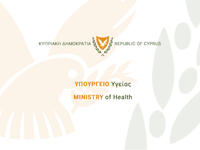Press Releases

10-12-2021 07:34
EMA and ECDC recommendations on heterologous vaccination courses against COVID-19
The EU is currently experiencing a rising number of infections in the ongoing COVID-19 pandemic, as well as an increase in hospitalisation rates. Vaccines are continuing to prevent many millions of EU citizens from becoming very ill or dying and figures show that numbers of hospitalisations and deaths remain lowest in those Member States with the highest vaccination rates. The European Medicines Agency (EMA) and the European Centre for Disease Prevention and Control (ECDC) therefore continue to urge all EU citizens to get fully vaccinated and to adhere to recent recommendations on booster vaccination.
In line with measures already taken by many Member States, an increasing number of clinical studies, supported by real world evidence, have now looked at the possibility of using two different COVID-19 vaccines, either for the first and second doses of a primary (initial) course, which is known as heterologous primary vaccination, or using a third dose of a different COVID-19 vaccine as a booster 3 to 6 months after a primary vaccination course (heterologous boosting).
In order to provide scientific grounds and further provide flexibility to vaccination schemes EMA and ECDC, in collaboration with EU experts in EMA’s COVID-ETF group, have reviewed the available evidence, and provided technical recommendations and advice on heterologous vaccination against COVID-19, either in the primary course or as a booster.
Evidence from studies on heterologous vaccination suggests that the combination of viral vector vaccines and mRNA vaccines produces good levels of antibodies against the COVID-19 virus (SARS-CoV-2) and a higher T-cell response than using the same vaccine (homologous vaccination) whether in a primary or booster regimen. The heterologous regimens were generally well tolerated.
The use of a viral vector vaccine as a second dose in primary vaccination schemes, or use of two different mRNA vaccines, is less well studied.
While research is ongoing to provide more evidence on long-term safety, duration of immunity and effectiveness, the use of heterologous schedules may offer flexibility in terms of vaccination options, particularly to reduce the impact on the vaccine rollout should a vaccine not be available for any reason.
EMA’s and ECDC’s expert considerations, the outcome of which are detailed below, are intended to help decision makers for national vaccination campaigns ensure that the maximum number of EU citizens are vaccinated and protected as quickly as possible.
Marketing authorisation holders are also being encouraged to submit variations to add details about such use to the product information. Although the review did not look at other vaccines not yet licensed in the EU, research into heterologous combinations of these will be taken into account in future if these are licensed and more evidence becomes available.
Technical recommendations and advice on heterologous primary and booster COVID-19 vaccination
Following the analysis of the available evidence, EMA and ECDC are issuing the following technical recommendations and advice. A detailed review of the literature supporting the advice will be published by EMA and ECDC in the near future.
Considerations for heterologous primary vaccination
• The currently available evidence consistently points towards an acceptable tolerability and enhanced immune responses with the sequential heterologous regimen of vector vaccine/mRNA vaccine versus the homologous vector vaccine regimen.
• Some studies have reported higher reactogenicity (e.g. pain, fever, headache, fatigue) of heterologous vaccination but results are not consistent. With respect to infrequently occurring adverse reactions, there is insufficient data to draw conclusions.
• Regarding immunogenicity, studies are consistent in showing the heterologous regimen is able to induce significantly increased immune responses, including improved memory B cells, compared with a homologous viral vector regimen. A slight increase in humoral immune responses with respect to homologous mRNA vaccination is sometimes seen, but not consistently, overall supporting a similar antibodies response.
• The increased immunogenicity appears consistent with the increased vaccine effectiveness against SARS-CoV-2 symptomatic infection of the heterologous vector-mRNA regimen as compared to homologous vector immunisation based on several good quality observational studies.
• Preliminary but consistent evidence indicates that the heterologous regimen is able to induce an expanded breadth of immune responses, with improved humoral and cell mediated cross-reactivity against various variants of concerns, which would translate into improved effectiveness based on the studies seen so far.
• Overall the data presented support the use of mixed vector/mRNA schedules. Based on the evidence seen so far and on existing clinical knowledge, giving a second dose of mRNA vaccine to previous recipients of a single dose of vector vaccines is a vaccination strategy that is beneficial from an immunological perspective with a positive impact on the achieved level of protection from infection and disease. There is less evidence about heterologous mRNA vaccination regimens, but enough to indicate that such an approach could be used as well when flexibility or acceleration in the vaccination campaigns is needed. Safety data after such heterologous mRNA regimens are currently under investigation to determine if there is an increased risk of myocarditis.
• Giving an adenoviral vector vaccine as second dose after a mRNA vaccine might be considered if there is a problem with availability of mRNA vaccines, but based on the limited data available it may be less advantageous from an immunological point of view than the opposite sequence.
• Long term protection data after heterologous or homologous primary vaccination is limited, but a few studies suggest a decline in protection against severe disease from 6 months after heterologous vaccination. Some of these studies also show that waning of effectiveness is greater and faster for Vaxzevria than other regimens and that waning is overall faster among older frail individuals, and individuals with comorbidities.
• More research is needed to investigate use of heterologous regimens in immunosuppressed individuals.
Considerations for heterologous booster vaccination
• The evidence available so far with different types of authorised vaccines indicates that a heterologous booster appears as good as or better in terms of immune responses than a homologous booster. Among the heterologous booster combinations, boosting with a mRNA after a vector primary series is more immunogenic than the reverse. In addition, the safety profile of heterologous and homologous booster combinations remains comparable based on the data available.
• A heterologous booster vaccination strategy can thus be considered as an alternative strategy, e.g. to improve protection that can be achieved with some vaccines, to allow more flexibility in case of issues with vaccine acceptance, supply or availability. Data currently available support safe and effective administration of a booster dose as early as 3 months from completion of the primary vaccination should such a short interval be desirable from a public health perspective, notwithstanding current recommendations to administer booster preferably after 6 months.
• Safety data provide limited but reassuring information with respect to short term reactogenicity for any booster combination. A heterologous booster dose of viral vector vaccine or Spikevax tend to give more adverse events related to local or systemic reactogenicity. Large observational studies will provide additional evidence with respect to occurrence of rare adverse events, such as myocarditis, with either homologous or heterologous boosters.
• While it would be expected that higher immune response will translate into increased protection against infection and disease, including from different variants of concern, due to the lack of established correlates of protections it cannot be precisely defined at this stage to what extent such an improved immunogenicity would translate into higher effectiveness. However emerging effectiveness data show increased protection from symptomatic disease after heterologous boosting with an mRNA vaccine during spread of the Delta variant.
• Administration of booster doses, whether homologous or heterologous, needs to take into account waning of protection over time and optimal interval for an efficient immune response. At the moment there are no data in immunosuppressed individuals to support a recommendation for heterologous boosting.
Other protective measures
Even with vaccination, other measures such as physical distancing, ensuring adequate ventilation in closed spaces, the maintenance of hand and respiratory hygiene measures, appropriate use of face masks, and staying home when ill remain a major pillar of our response to COVID-19, particularly as variants like Delta continue to spread and new variants such as Omicron continue to arise.
While vaccines are hugely important in preventing hospitalisation and death, and have offered protection against all variants so far, they cannot prevent illness in every case. To avoid a resurgence of cases with a possible increase in hospitalisations and deaths, EMA and ECDC urge citizens to follow advice at national and European level to protect themselves, and the wider community.
Working together for public health
EMA and ECDC re-emphasise the need to ensure that as many people as possible are fully vaccinated against COVID-19. There is an urgent need to close immunity gaps in the adult population and ensure effective and equitable coverage across countries and regions in Europe.
Both agencies will continue to work closely together with other EU bodies and national agencies to share the best scientific data and help the Member States come to informed public health decisions in the light of their national as well as the European situation.
EMA and ECDC will continue to follow the scientific evidence and communicate their recommendations and decisions with the maximum possible transparency. More information is available from the websites at:
https://www.ecdc.europa.eu/en/covid-19
https://www.ecdc.europa.eu/en/covid-19/prevention-and-control/vaccines
https://vaccinetracker.ecdc.europa.eu/public/extensions/COVID-19/vaccine-tracker.html#uptake-tab
https://vaccination-info.eu/en.
(AP)
Relevant Press Releases







